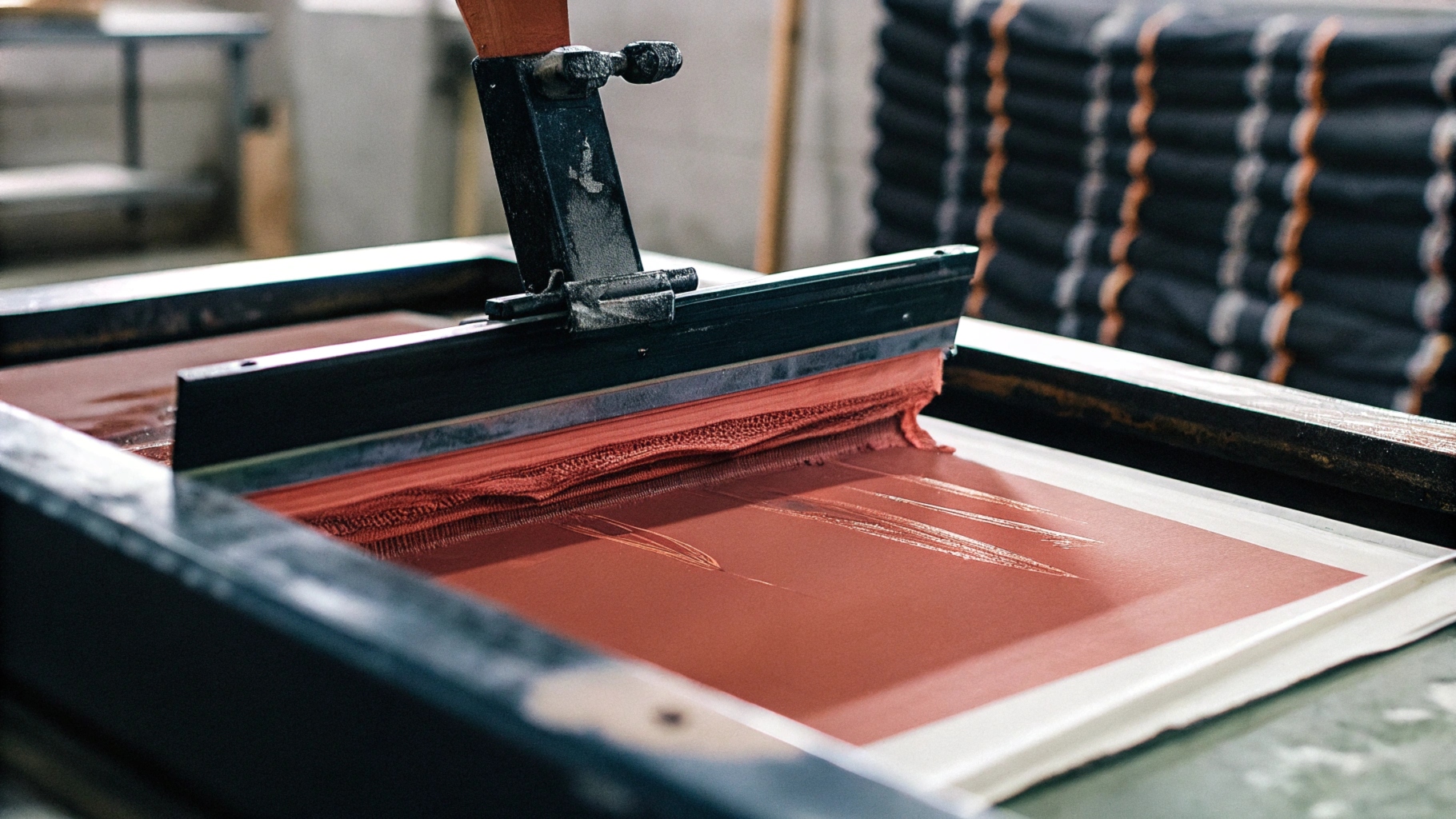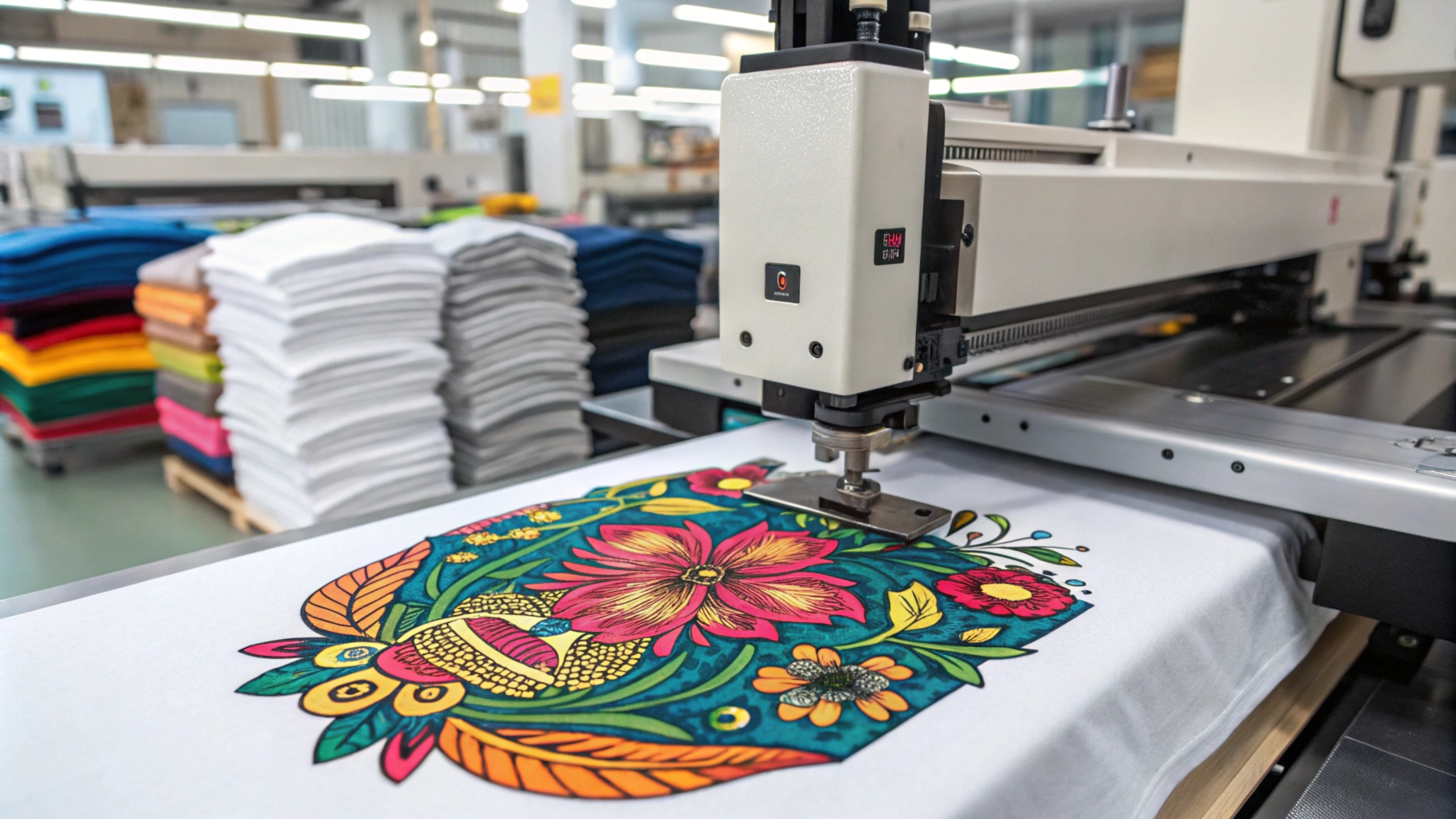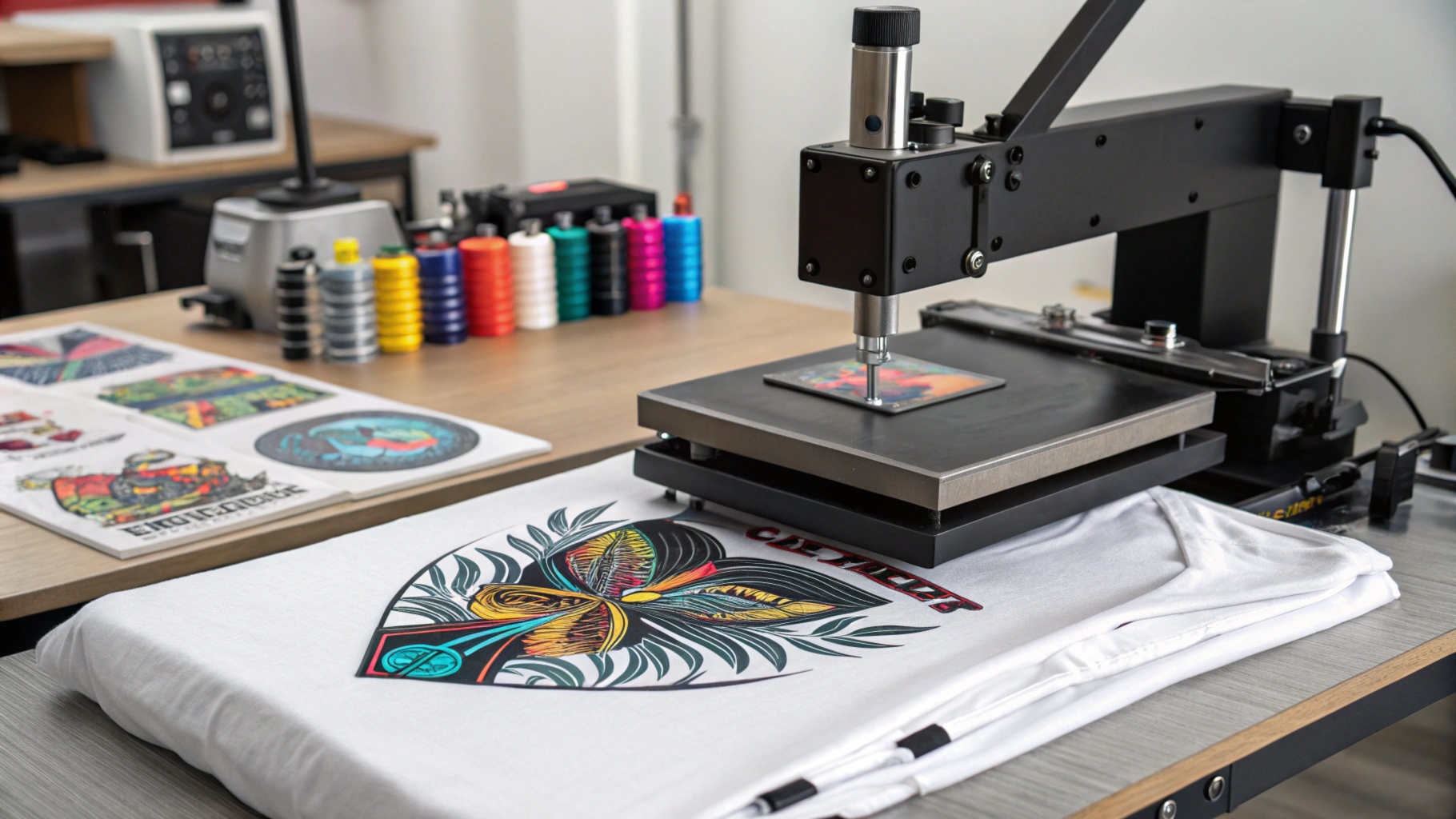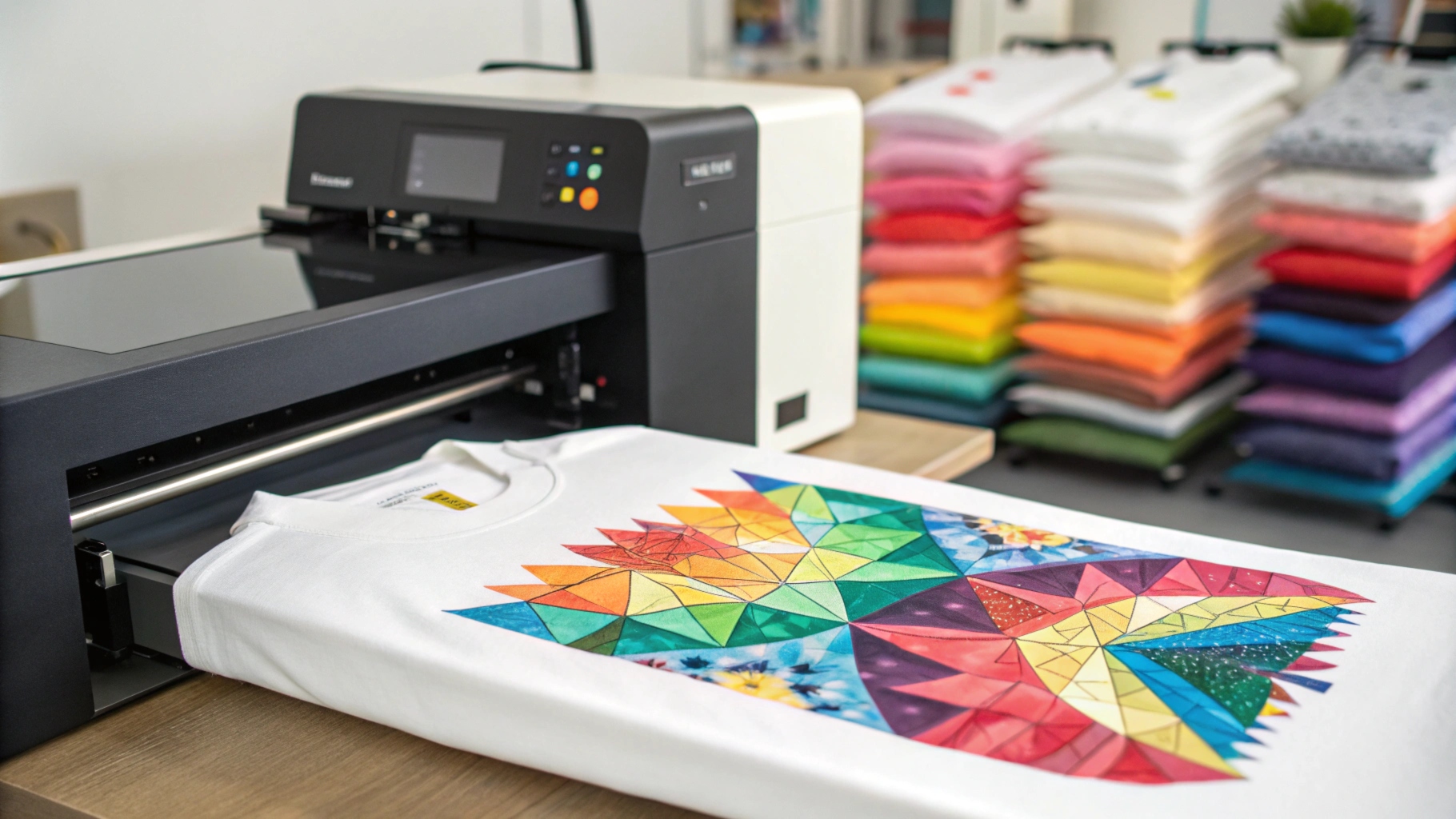Table of contents
- What is Screen Printing?
- What is Direct-to-Garment (DTG) Printing?
- What is Heat Transfer Printing?
- What is Sublimation Printing?
What is Screen Printing?
Screen printing, also known as silkscreen printing, is one of the most popular and oldest forms of T-shirt printing. This method involves creating a stencil (or screen) and using it to apply layers of ink on the printing surface. It is ideal for large runs of T-shirts with simple designs.
How does Screen Printing Work?
The screen printing process involves several steps:
- Preparing the screen: The screen is coated with a light-sensitive emulsion and exposed to the design.
- Setting up the press: The screen is positioned on the T-shirt, and ink is pushed through the mesh using a squeegee.
- Drying the print: After printing, the T-shirt is dried to cure the ink.
Advantages of Screen Printing
Screen printing has many advantages:
- Durable and long-lasting prints
- Cost-effective for large runs
- Bright, bold colors are achievable

Disadvantages of Screen Printing
However, screen printing does have a few drawbacks:
- Expensive for short runs
- Not ideal for complex, multi-colored designs
- Requires significant setup time
| Pros | Cons |
|---|---|
| Durable and long-lasting prints | Best suited for simple designs |
| Cost-effective for bulk orders | Expensive for short runs |
| Great for bright, bold colors | Can be difficult for multi-color designs |
What is Direct-to-Garment (DTG) Printing?
Direct-to-Garment (DTG) printing is a newer T-shirt printing method that involves printing designs directly onto fabric using specialized inkjet printers. DTG is known for its ability to produce high-quality prints with intricate designs and multiple colors.
How Does DTG Printing Work?
DTG printing works similarly to a home inkjet printer, except the T-shirt is the paper. The printer sprays the ink directly onto the fabric, where it bonds with the fibers to create vibrant, high-quality designs.
Advantages of DTG Printing
DTG printing offers several benefits, including:
- Ideal for small batches and custom designs
- Ability to print highly detailed images
- Perfect for multi-colored designs

Disadvantages of DTG Printing
However, there are some downsides to DTG printing:
- Slower production time compared to screen printing
- Higher cost per print for large quantities
- Not suitable for all fabric types
| Pros | Cons |
|---|---|
| Great for complex, multi-color designs | Slower production time |
| Works well for small orders | Can be expensive for large orders |
| High-quality prints | Requires specialized equipment |
What is Heat Transfer Printing?
Heat transfer printing involves using heat to apply a printed design onto fabric. This method typically uses a special transfer paper or vinyl that’s placed on the fabric and pressed with a heat press machine.
How Does Heat Transfer Printing Work?
There are several different heat transfer methods, including:
- Vinyl transfer: A design is cut from colored vinyl and applied using heat.
- Sublimation transfer: Involves the use of dye and heat to transfer a design onto polyester fabric.
Advantages of Heat Transfer Printing
Some advantages of heat transfer printing are:
- Good for small batches and custom designs
- Can create full-color images
- Quick turnaround time

Disadvantages of Heat Transfer Printing
However, heat transfer printing has a few limitations:
- Not as durable as other methods like screen printing
- Can peel or crack over time
- Best suited for light-colored fabrics
| Pros | Cons |
|---|---|
| Quick setup and production | Less durable than screen printing |
| Perfect for detailed, full-color designs | Can peel or crack over time |
| Works on a variety of fabrics | Not suitable for dark fabrics |
What is Sublimation Printing?
Sublimation printing is a unique process that uses heat to transfer dye into the fibers of the fabric. This technique is best suited for synthetic fabrics, especially polyester.
How Does Sublimation Printing Work?
Sublimation involves using heat to convert dye into gas, which then bonds with the fabric fibers. The result is a high-quality, vibrant print that won’t peel or crack over time.
Advantages of Sublimation Printing
The benefits of sublimation printing include:
- Vibrant, long-lasting prints
- Great for full-coverage prints
- No peeling or cracking of the design

Disadvantages of Sublimation Printing
Some downsides to sublimation printing are:
- Only works on synthetic fabrics (like polyester)
- Requires specialized equipment
- Not cost-effective for small runs
| Pros | Cons |
|---|---|
| Vibrant and long-lasting colors | Works only on synthetic fabrics |
| Perfect for all-over prints | Expensive equipment required |
| No cracking or peeling of design | Not cost-effective for small batches |
Post time: Dec-11-2024







